Ouch! What is Plantar Fasciitis?
Overview
Our feet are mechanical masterpieces and have certain features that allow them (and us) to perform in different environments, situations and tasks. They have the ability of flexing, moulding to the shape of the ground where we stand, walk, run, jump and, at the same time, they are resilient to resist to the impact generated from landing, sometimes over and over again as we run.
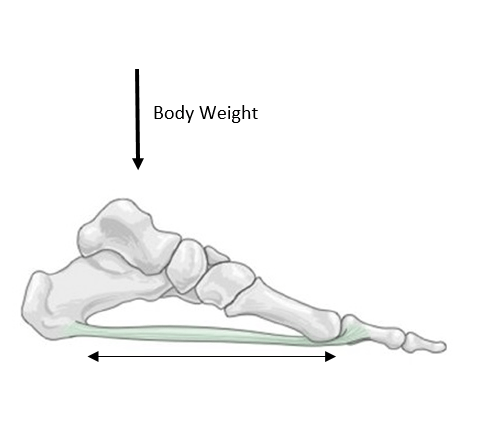
What is Plantar Fasciitis?
In order to perform in these situations of landing, jumping, running, amongst other features, the foot has a “spring” like system composed of an arc and a band that tenses that arc (Figure 1). The arc is composed of bones and ligaments that “tape” these bones together. The thick fascial band lies underneath the arc attached to each end of the arc, preventing these ends from coming part and collapsing. This band is called the Plantar Fascia.
Therefore, we can immediately understand 2 things:
- The band is loaded when the there is weight put upon the arc and, consequently.
- The amount of weight, the speed and the duration the arc is loaded for will lead to differences in the process of loading the band.
A Matter Of Tissue Capacity Vs Load
As a living tissue, any soft tissue of the musculoskeletal group (bones, ligaments, cartilage, muscles, fascias) will change its shape and architecture in response to the regular mechanical requirements/demands put upon them, i. e. bones get more dense if they are loaded for longer and brittle if they aren’t. In the same way, the plantar fascia will get more able to take on LOAD (will develop better tissue loading CAPACITY) if this load is put upon it on a regular basis.
If a structure is not used to a certain amount of LOAD, which sits slightly above the tissue CAPACITY, its tissue will evolve and improve its CAPACITY and gradually become able to take this load, as long this process happens gradually.
Great! Right?
Yes, but the problems generally start when we don’t respect the period required for the tissue to adapt and we load it abruptly more and more. This fast build up will lead to OVERLOAD of that tissue, leading to soreness, irritation and pain. By irritating the tissue, this OVERLOAD will also reduce the tissue’s CAPACITY, to the point that just a LOAD that we consider normal (like walking) is then enough to trigger the pain.
If we consider that, nowadays, there are many people with office based jobs (in which there isn’t many weight bearing challenges for the lower limbs) and then, suddenly, decide to take on running (fast and high impact loading of the lower limbs), long walks, CrossFit, etc, we can understand how all this will impact on the loaded tissues and why the pain arises.
What to do if this happens?
On an initial stage, the main goal is to identify the activities that trigger the pain, as these are the ones loading the fascia above its capacity and, then, manage these activities so that they trigger only mild symptoms, by avoiding them or adapting them. However, it’s also important to stay active, so moderation is really the way.
As said above the tissues will respond to load, so they still need to be loaded and exercised, but to a level that won’t aggravate the pain significantly. This will gradually build the tissue capacity up allowing us to do more. The plantar fascia, as the tendons, may take a while to react and change to load so the first skill you need to master is to be a “patient” patient.
As also said above, the speed, the weight, the duration of activity as well as joint stiffness, muscle fatigue are all variables that will contribute to the amount of load put through the plantar fascia, so manipulating these will allow us to exercise with an adequate amount of load.
What Does Plantar Fasciitis Feel Like?
Generally, people who have developed plantar fasciitis, complain of pain under the foot, usually more close to the heel bone, but that can also be felt in the mid portion of the foot. This pain is generally very noticeable on the first steps in the morning or after sitting for long periods and then it tends to ease as the plantar fascia “warms up”. If you are on your feet for long periods the pain may gradually build up and be specially sore in the following morning. The underside of the heel bone is generally tender to deep touch.
Physiotherapy for Plantar Fasciitis?
Your Physiotherapist will make sure you understand what was explained above and will also answer any question you have about it. Your physiotherapist will help you to get to the bottom of why you, specifically, developed this condition by scrutinising your daily activities and the onset of the symptoms.
A thorough assessment will identify any changes to the normal biomechanics, functioning or sport/task technique of the lower limbs that may also be at the root or contribute to the onset of the condition, as this will also be determinant to normalise the load put upon the plantar fascia.
Below, we show you some Exercises you can do to start helping the recovery of the plantar fascia:
Exercise 1: Gastrocnemius Stretch
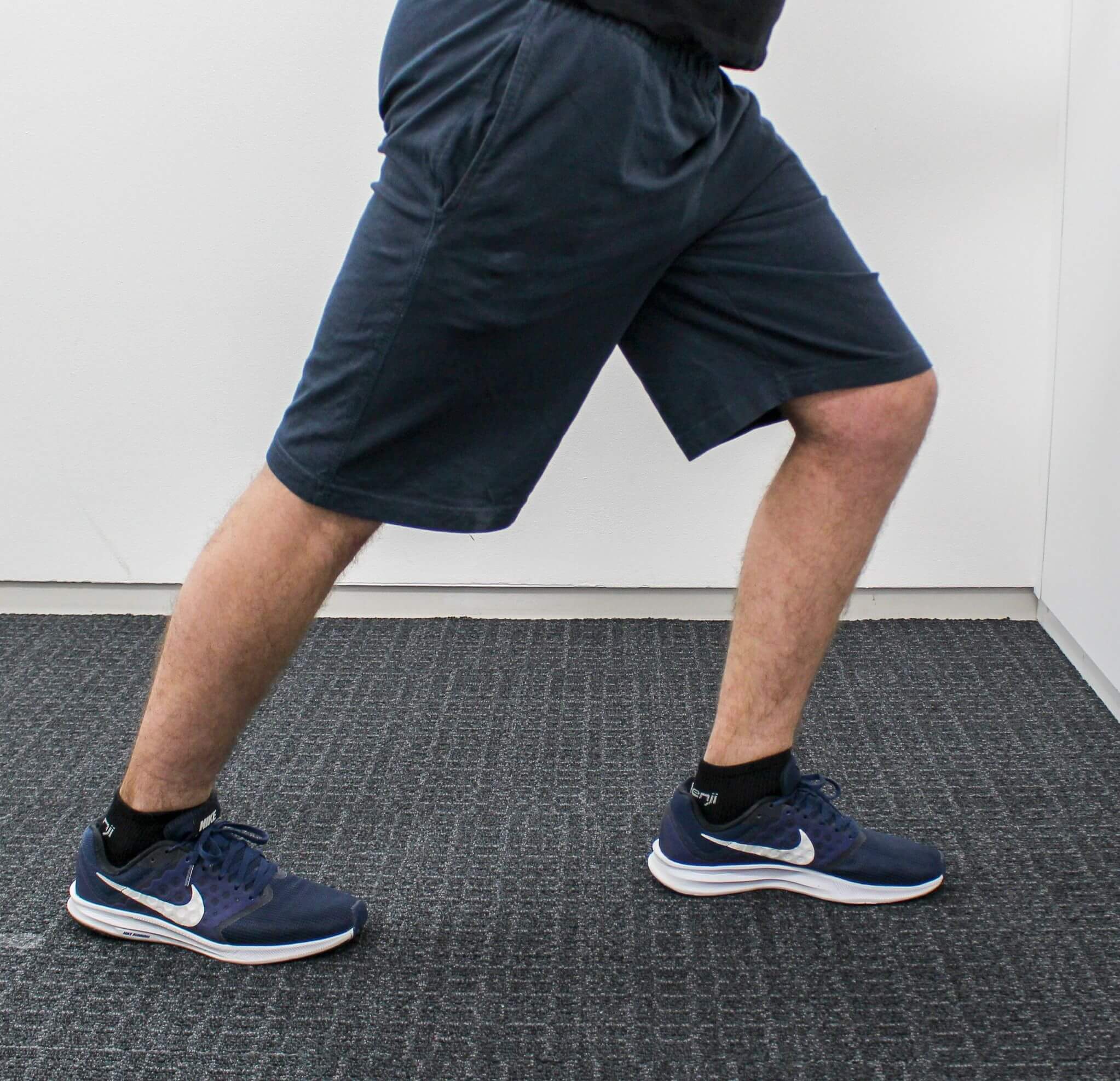
How to do it
- Facing a wall, put your hands on the wall.
- Stand with BAD leg back and knee straight. The GOOD leg forward and bent.
- Keeping the BAD heel on the floor and the knee straight lean into the wall, bending the good knee further, until stretch is felt in the calf of the BAD leg.
- Hold for 15-20 secs
Exercise 2: Soleus Stretch
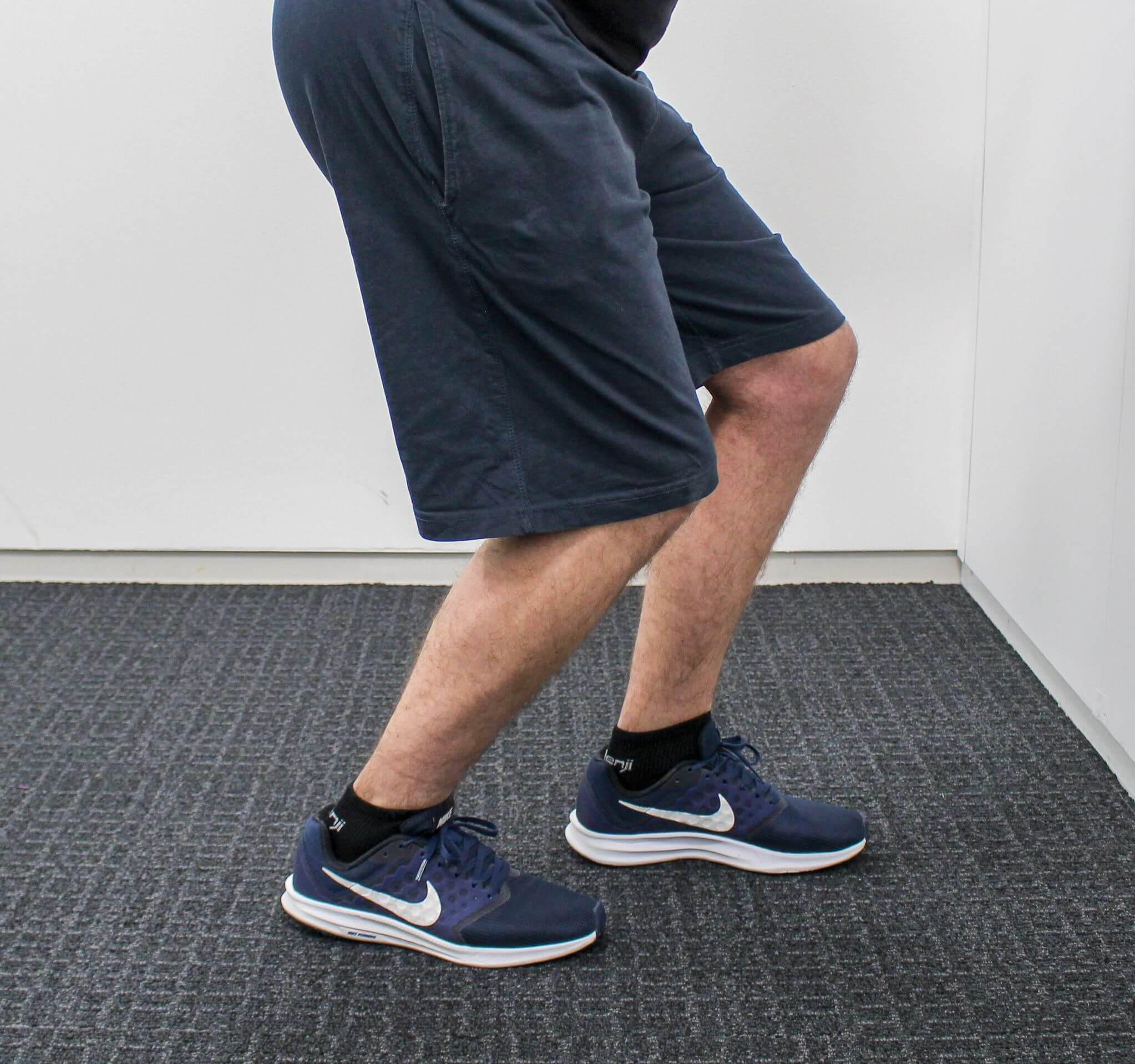
How to do it
- Facing a wall, put your hands on the wall.
- Stand with BAD leg back, both knees bent.
- Keeping both heels on the floor, bring your buttocks down, bending both knees, stretch is felt in the lower calf of the BAD leg.
- Hold for 15-20 secs
Exercise 3: Plantar Fascia Stretch Emphasis
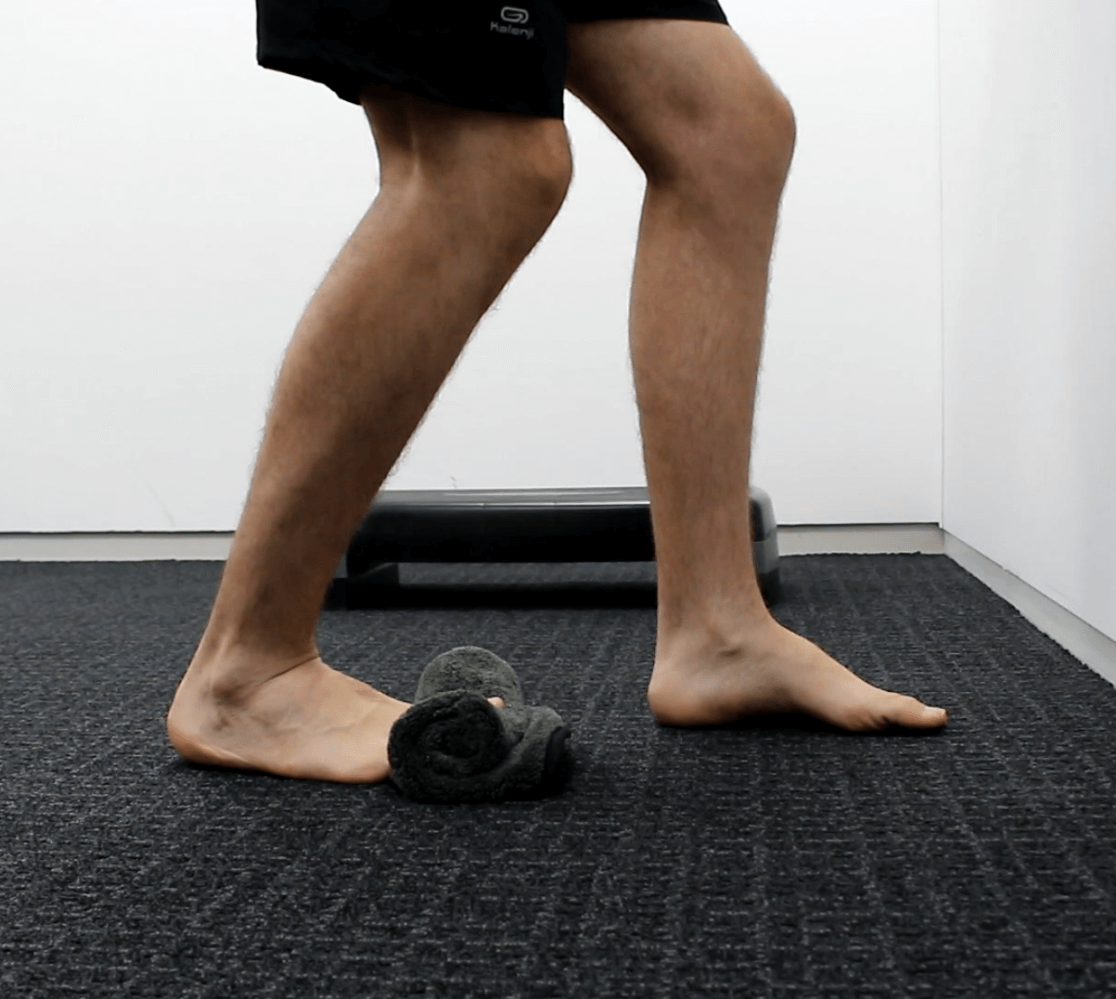
How to do it
- Just like the previous exercise, but this time you use something under the toes to bring them up.
- Stand with BAD leg back, both knees bent.
- If you do this right you will feel some stretching under the foot as you bend your knees.
- Hold for 15-20 secs
Exercise 4: Gentle Heel Raises
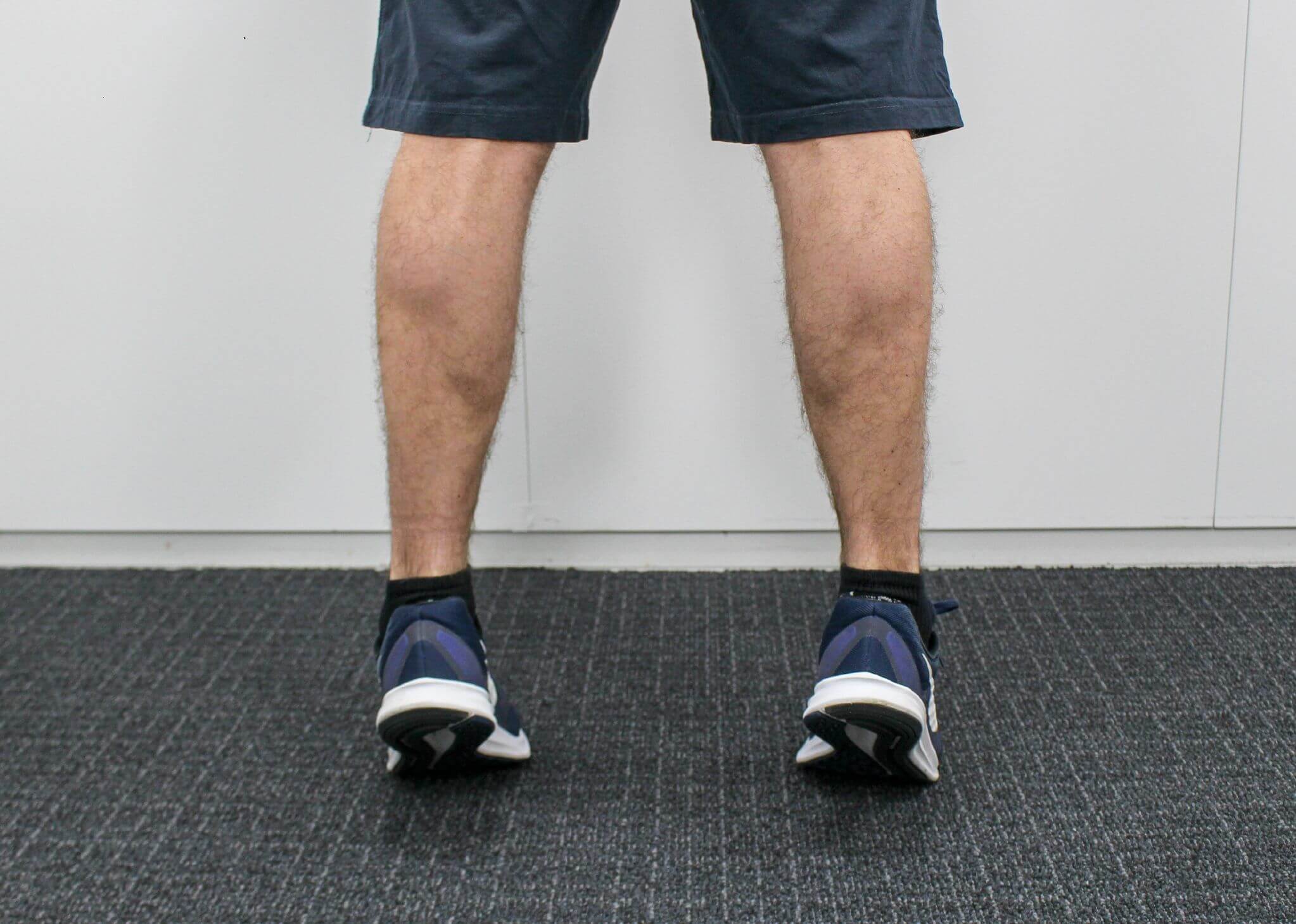
How to do it
- Heel raises to load the calf muscles.
- Stand on both feet.
- Use the both legs to raise up onto tiptoes and hold for 5 secs.
- Slowly, go back to down to the floor.
- Repeat.
- 2x 10 repetitions, TWICE a day
Exercise 5: Plantar Fascia Massage
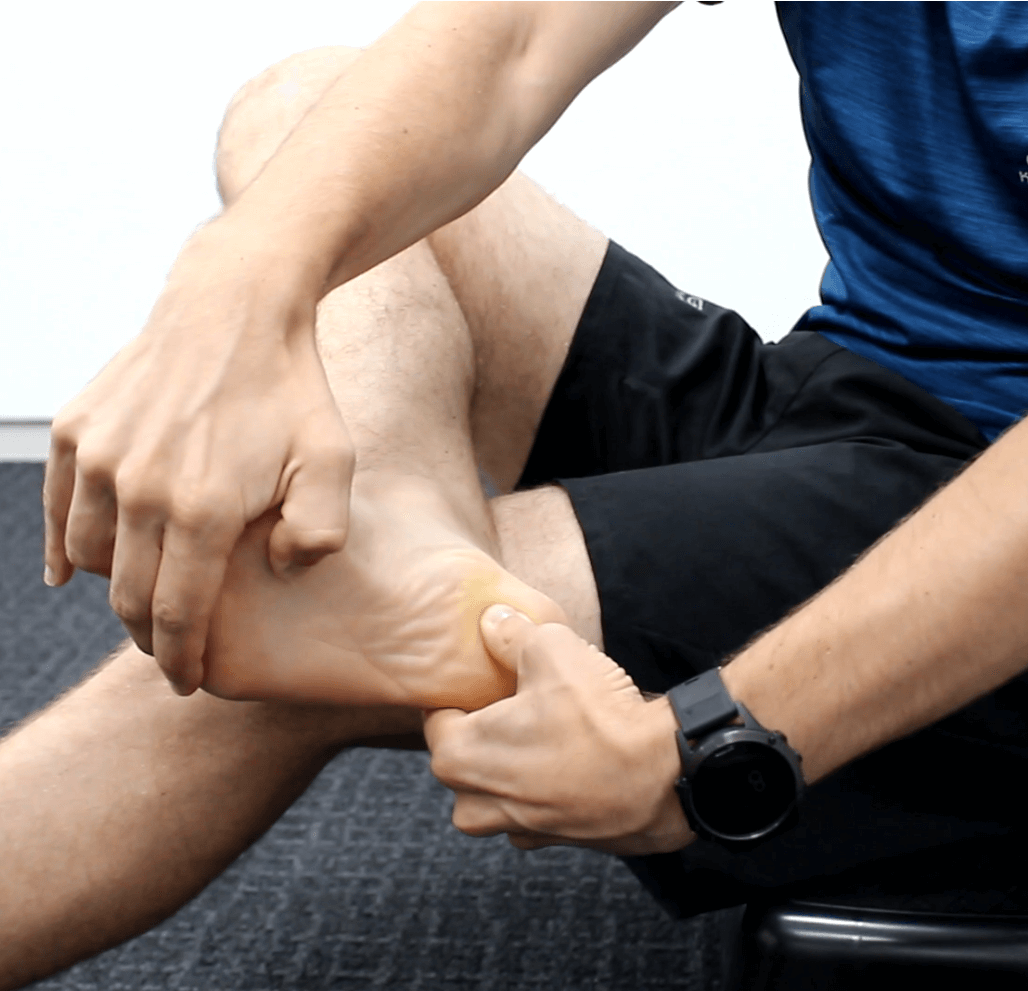
How to do it
- In order to massage the fascia, first localise the point of tenderness on the underside of the heel bone.
- Then, bring the toes up to put the fascia into a stretch and, with firm pressure, massage the area of pain without sliding your thumb on the skin: always keep the same point of contact with the skin!
- This massage should be uncomfortable, but never very painful.
- You should feel the pain gradually dulling off as you massage it for 2-3 mins.
This massage should only be done to acceptable pain levels but not if too acute or irritated. Don’t do this massage more frequently than every other day.
There will be some videos of these on Instagram and Facebook really soon! Keep an eye!
Let us know how you’ve felt!
*****Disclaimer: When attempting these exercises, please use common sense and do not perform or modify if there is pain or discomfort! Irritated plantar fascias can be very sensitive areas so please look for a qualified physiotherapist if you do experience increasing pain. They can treat and supervise you through these exercises.
References:
- Greisberg J., Foot and ankle anatomy and biomechanics. In: DiGiovanni CW, Greisberg J, editors. Core knowledge in orthopedics: foot and ankle. Philadelphia: Elsevier; 2007;
